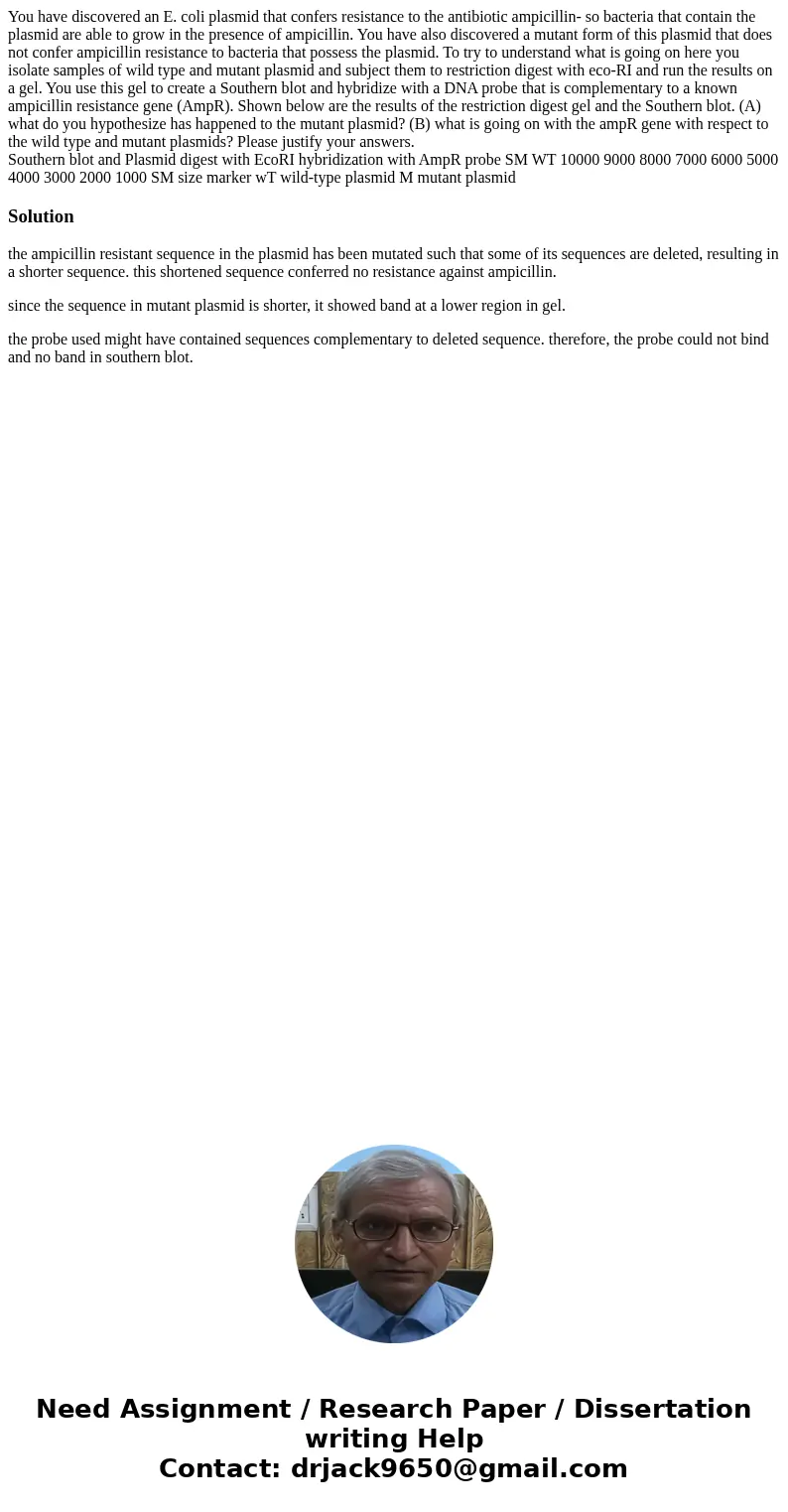You have discovered an E coli plasmid that confers resistanc
You have discovered an E. coli plasmid that confers resistance to the antibiotic ampicillin- so bacteria that contain the plasmid are able to grow in the presence of ampicillin. You have also discovered a mutant form of this plasmid that does not confer ampicillin resistance to bacteria that possess the plasmid. To try to understand what is going on here you isolate samples of wild type and mutant plasmid and subject them to restriction digest with eco-RI and run the results on a gel. You use this gel to create a Southern blot and hybridize with a DNA probe that is complementary to a known ampicillin resistance gene (AmpR). Shown below are the results of the restriction digest gel and the Southern blot. (A) what do you hypothesize has happened to the mutant plasmid? (B) what is going on with the ampR gene with respect to the wild type and mutant plasmids? Please justify your answers.
Southern blot and Plasmid digest with EcoRI hybridization with AmpR probe SM WT 10000 9000 8000 7000 6000 5000 4000 3000 2000 1000 SM size marker wT wild-type plasmid M mutant plasmid Solution
the ampicillin resistant sequence in the plasmid has been mutated such that some of its sequences are deleted, resulting in a shorter sequence. this shortened sequence conferred no resistance against ampicillin.
since the sequence in mutant plasmid is shorter, it showed band at a lower region in gel.
the probe used might have contained sequences complementary to deleted sequence. therefore, the probe could not bind and no band in southern blot.

 Homework Sourse
Homework Sourse